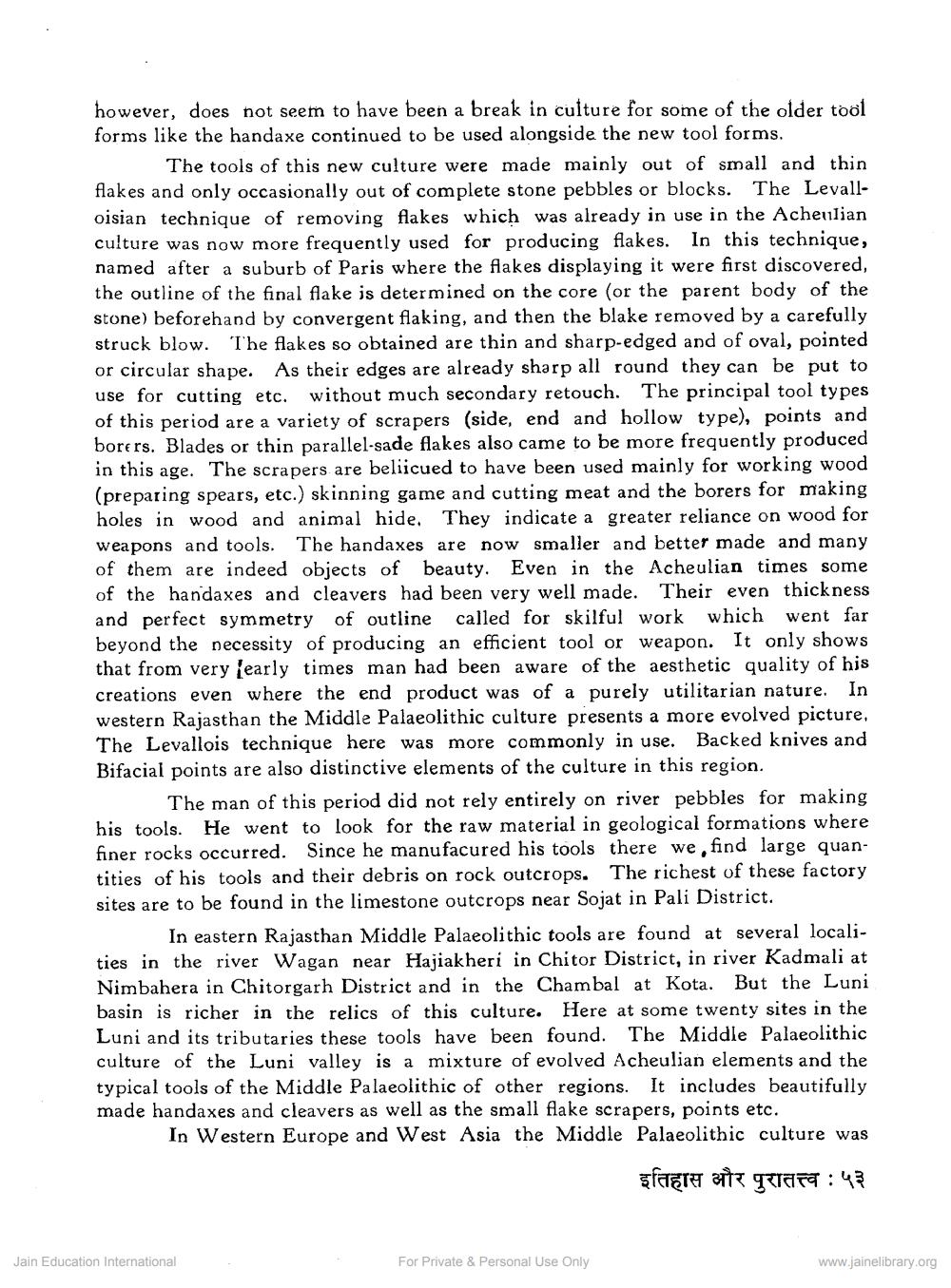Book Title: Prehistoric Background of Rajasthan Culture Author(s): V N Misra Publisher: Z_Agarchand_Nahta_Abhinandan_Granth_Part_2_012043.pdf View full book textPage 5
________________ however, does not seem to have been a break in culture for some of the older tool forms like the handaxe continued to be used alongside the new tool forms. The tools of this new culture were made mainly out of small and thin flakes and only occasionally out of complete stone pebbles or blocks. The Levall oisian technique of removing flakes which was already in use in the Acheulian culture was now more frequently used for producing flakes. In this technique, named after a suburb of Paris where the flakes displaying it were first discovered, the outline of the final flake is determined on the core (or the parent body of the stone) beforehand by convergent flaking, and then the blake removed by a carefully struck blow. The flakes so obtained are thin and sharp-edged and of oval, pointed or circular shape. As their edges are already sharp all round they can be put to use for cutting etc. without much secondary retouch. The principal tool types of this period are a variety of scrapers (side, end and hollow type), points and borers. Blades or thin parallel-sade flakes also came to be more frequently produced in this age. The scrapers are beliicued to have been used mainly for working wood (preparing spears, etc.) skinning game and cutting meat and the borers for making holes in wood and animal hide. They indicate a greater reliance on wood for weapons and tools. The handaxes are now smaller and better made and many of them are indeed objects of beauty. Even in the Acheulian times some of the handaxes and cleavers had been very well made. Their even thickness. and perfect symmetry of outline called for skilful work which went far beyond the necessity of producing an efficient tool or weapon. It only shows that from very fearly times man had been aware of the aesthetic quality of his creations even where the end product was of a purely utilitarian nature. western Rajasthan the Middle Palaeolithic culture presents a more evolved picture. The Levallois technique here was more commonly in use. Backed knives and Bifacial points are also distinctive elements of the culture in this region. In The man of this period did not rely entirely on river pebbles for making his tools. He went to look for the raw material in geological formations where finer rocks occurred. Since he manufacured his tools there we, find large quantities of his tools and their debris on rock outcrops. The richest of these factory. sites are to be found in the limestone outcrops near Sojat in Pali District. In eastern Rajasthan Middle Palaeolithic tools are found at several localities in the river Wagan near Hajiakheri in Chitor District, in river Kadmali at Nimbahera in Chitorgarh District and in the Chambal at Kota. But the Luni basin is richer in the relics of this culture. Here at some twenty sites in the Luni and its tributaries these tools have been found. The Middle Palaeolithic culture of the Luni valley is a mixture of evolved Acheulian elements and the typical tools of the Middle Palaeolithic of other regions. It includes beautifully made handaxes and cleavers as well as the small flake scrapers, points etc. In Western Europe and West Asia the Middle Palaeolithic culture was इतिहास और पुरातत्त्व ५३ Jain Education International For Private & Personal Use Only www.jainelibrary.orgPage Navigation
1 ... 3 4 5 6 7 8 9 10 11 12 13 14 15 16 17 18 19
